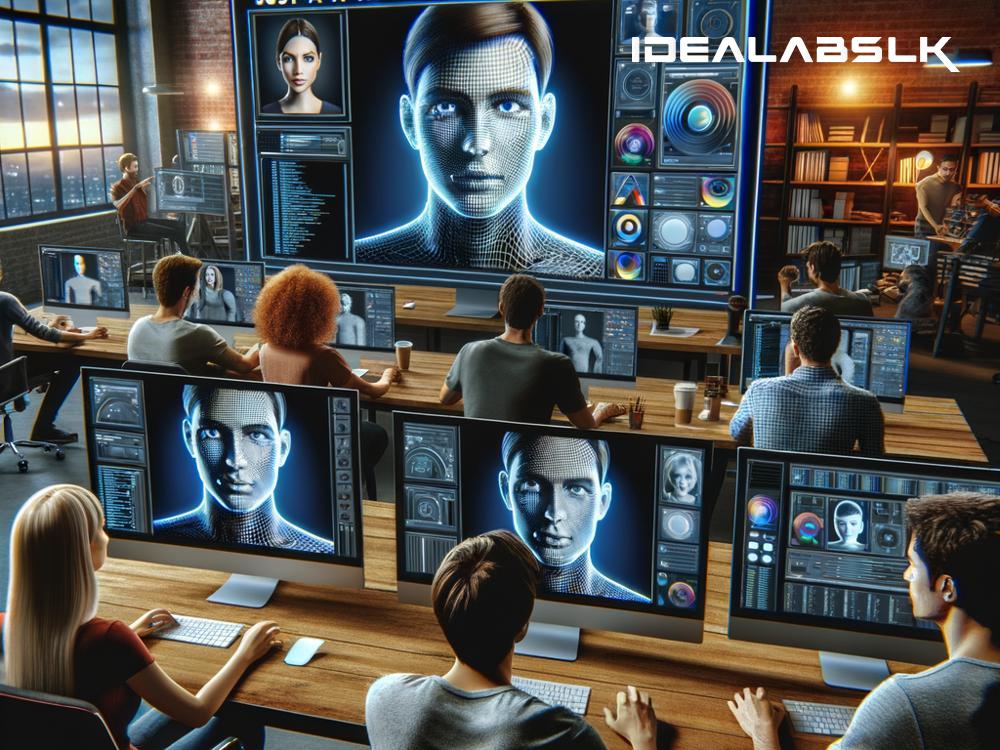How AI is Crafting Digital Doubles of Celebrities for Social Media
In the wildly evolving world of technology, Artificial Intelligence (AI) continues to break new ground, especially in the realm of social media and entertainment. One of the most mesmerizing advancements? The creation of digital twins or virtual replicas of real-world celebrities. These AI-generated lookalikes are not just mere computer-generated imagery; they’re becoming increasingly lifelike, capable of mimicking the appearance, voice, and even the subtle mannerisms of their human counterparts. But how exactly is AI pulling off this feat? Let’s dive into the fascinating process.
The Birth of a Digital Twin
The journey begins with the collection of vast amounts of data. For a celebrity digital twin, this means scouring through photos, videos, interviews, and any other media that capture the physical and vocal traits of the star in question. AI algorithms, specifically machine learning and deep learning, then analyze this data, learning to recognize patterns in facial expressions, speech, and movements.
Facial Mapping and Animation
Using a technique known as facial mapping, AI software can construct a 3D model of a celebrity’s face. It's akin to sketching a highly detailed digital portrait, pixel by pixel, until the likeness is uncannily accurate. But it doesn’t stop with static images. AI brings these models to life through animation, enabling them to talk, smile, frown, or perform any number of actions, just like a real person.
Voice Replication
Equally impressive is AI's ability to clone voices. By studying audio recordings, AI algorithms can understand and replicate the unique pitch, tone, cadence, and emotional inflections of a celebrity’s voice. The result is a digital persona that doesn’t just look like the star but sounds indistinguishably like them too.
The Role of Generative AI
At the heart of all this is Generative AI, a subset of AI that focuses on creating new content, whether that be images, sounds, or videos. Through a process called deep learning, which involves neural networks (essentially digital replicas of the human brain), Generative AI can produce content that’s not just new but also incredibly nuanced and detailed.
Virtual Celebrities on Social Platforms
So, what happens to these digital twins once they’re created? They find their spotlight on social media, enthralling fans and audiences worldwide. From Instagram to TikTok to Twitter, virtual celebrities can post updates, engage with fans, or even debut new music and videos. They’re not confined by geography, time zones, or even the limitations of human energy—making them perfect, perpetual ambassadors of their human original’s brand.
The Ethical and Creative Horizon
As exciting as this technology is, it also opens up a pandora's box of ethical considerations. Consent, privacy, and the authenticity of digital personas become hotly debated topics. How much control should a celebrity have over their digital twin? What happens if a digital persona is used in a way that goes against the celebrity’s values or public image?
On the flip side, the creative possibilities are boundless. Digital twins can be used for good, like raising awareness for causes close to a celebrity's heart or bringing historical figures to life for educational purposes. They can also allow celebrities to be in “two places at once,” attending virtual events without leaving their homes.
What’s Next?
As AI technology continues to evolve, so too will the realism and capabilities of digital twins. We may soon find ourselves in a world where virtual and real celebrities coexist seamlessly, each engaging with fans in their own unique way. The potential for storytelling, education, and entertainment is vast, limited only by our imagination and, of course, the ethical frameworks we choose to implement.
Conclusion
AI’s role in creating digital twins of celebrities for social platforms is a testament to the breathtaking pace of technological advancement. It’s a glimpse into a future where the lines between digital and physical become increasingly blurred. As we navigate this new frontier, the challenge will be to harness the power of AI for creative and positive outcomes while safeguarding the authenticity and ethics of our digital interactions. The digital age is just getting started, and its stars—both human and AI—are shining brighter than ever.

